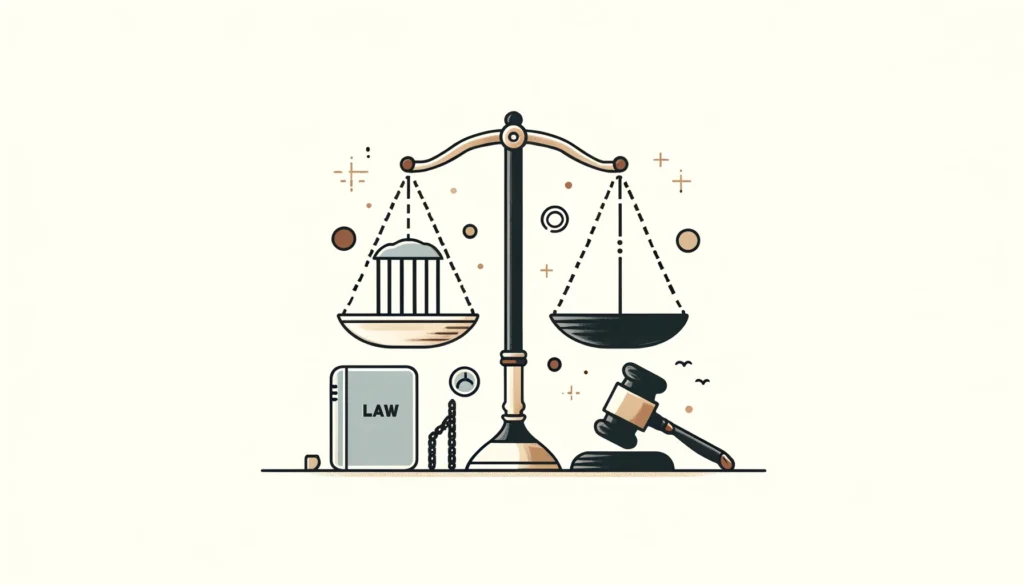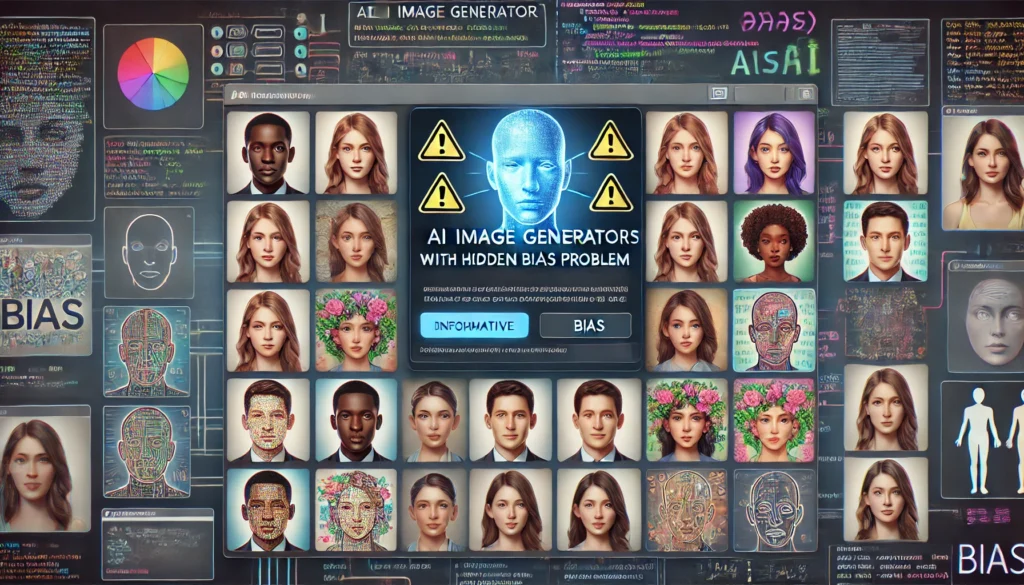
Artificial intelligence (AI) is transforming various industries by automating tasks, enhancing decision-making, and providing insights that were previously unimaginable. However, with these advancements come the potential for errors, which can have significant and sometimes catastrophic consequences. The question of legal responsibility for these AI errors is a complex and evolving issue, touching on aspects of product liability, corporate accountability, developer ethics, and government regulation.
The Expansion of AI Across Industries
AI is being integrated into a wide range of applications, from autonomous vehicles and medical diagnostics to financial trading and criminal justice. Each of these areas presents unique challenges when it comes to assigning responsibility for errors. For example, an error in an autonomous vehicle’s navigation system could lead to accidents, while a misdiagnosis by an AI-driven medical tool could result in improper treatment and patient harm.
The ubiquity of AI in critical sectors means that the stakes are high when errors occur. The legal system, however, is often ill-equipped to deal with the nuances of AI-related incidents, especially when the technology operates in ways that are not easily understandable by humans.
The Complexity of AI Decision-Making
AI systems, particularly those that utilize machine learning, make decisions based on vast amounts of data. These decisions can be influenced by the quality of the data, the algorithm’s design, and unforeseen interactions between the AI system and its environment. This complexity makes it difficult to determine where the fault lies when an error occurs.
For example, if an AI in a healthcare setting provides a diagnosis based on incomplete or biased data, the error might stem from the data itself, the way the AI was trained, or the decisions made by developers in creating the system. This complexity can obscure who is legally responsible, especially when the AI operates autonomously without direct human intervention.
Legal Frameworks and AI Liability
Currently, most legal frameworks are built around the concept of product liability, where manufacturers are held accountable for defects in their products. In the context of AI, this approach might involve holding the developer or the company that deploys the AI responsible if the system causes harm. However, AI systems are not traditional products—they are capable of evolving and learning from new data, making it challenging to apply conventional product liability rules.
Some legal scholars argue that new categories of liability may need to be developed specifically for AI. These could include strict liability for AI systems, where the entity deploying the AI would be responsible for any harm caused, regardless of fault or intent. Others suggest a more nuanced approach, where liability is distributed among different parties depending on their role in the AI’s creation and deployment.
The Role of AI Developers and Engineers
AI developers and engineers are at the forefront of creating these complex systems. Their role involves not only designing the algorithms but also anticipating potential ethical and legal issues that could arise from their use. Developers are often seen as the first line of defense against AI errors, as they have the technical expertise to understand how and why an AI system might fail.
However, holding developers solely responsible for AI errors is problematic. AI systems often rely on third-party data and components, and the decisions made by developers may be influenced by corporate priorities, resource constraints, or incomplete information about how the AI will be used in practice. This raises questions about the extent to which developers can—or should—be held accountable for errors that emerge after the AI is deployed.
Corporate Responsibility in AI Deployment
Companies that deploy AI systems also bear significant responsibility. Once an AI system is integrated into a company’s operations, the company must ensure that it functions correctly and does not cause harm. This includes conducting thorough testing, monitoring the AI’s performance, and being prepared to intervene if the system begins to malfunction.
Corporate liability for AI errors can be seen in various forms. For example, if an AI system used in a financial institution leads to incorrect trading decisions, resulting in significant financial losses, the company could be held liable for failing to adequately oversee and control the AI’s actions. Similarly, if a healthcare provider uses an AI system that misdiagnoses patients, the provider may face legal consequences for not ensuring that the system was accurate and reliable.
In some cases, companies might attempt to mitigate their liability by including disclaimers or requiring users to agree to terms and conditions that limit the company’s responsibility for AI errors. However, such strategies may not hold up in court, especially if the harm caused by the AI is severe or if it can be shown that the company was negligent in its deployment of the AI system.
User Responsibility and the Limits of Trust in AI
Users of AI systems, whether individuals or organizations, also have a role to play in preventing and mitigating errors. User responsibility becomes particularly important in fields where AI is used to assist but not replace human decision-making. For instance, a doctor using AI to help diagnose a patient must not blindly trust the AI’s recommendations but should instead use their professional judgment to evaluate the AI’s output.
The legal implications of user responsibility are still being explored. If an error occurs because a user relied too heavily on AI without proper oversight, they could be seen as partially responsible for the outcome. This raises ethical questions about the extent to which users should be expected to understand and critically evaluate AI systems, especially when these systems are marketed as being highly reliable or even infallible.
Government Regulation and the Role of Public Policy
Governments are increasingly recognizing the need for regulation of AI to protect the public from potential harms. Regulatory frameworks could include setting standards for AI development, requiring transparency in AI algorithms, and mandating that companies regularly test and audit their AI systems to ensure they are functioning as intended.
In the European Union, the proposed Artificial Intelligence Act aims to create a comprehensive regulatory framework for AI, focusing on high-risk AI systems that could significantly impact people’s lives. This includes AI used in areas like healthcare, law enforcement, and transportation. The Act proposes strict requirements for these systems, including risk assessments, documentation, and human oversight.
However, global approaches to AI regulation vary widely. In the United States, for example, there is a more decentralized approach, with different states implementing their own AI-related laws. This can lead to a patchwork of regulations that make it difficult for companies operating across borders to ensure compliance. It also raises the question of whether there should be an international standard for AI regulation to avoid conflicting legal obligations.
Ethical Considerations and the Need for Responsible AI
The legal implications of AI errors cannot be fully understood without considering the ethical dimensions of AI development and deployment. Ethical AI involves creating systems that are transparent, fair, and accountable. This means designing algorithms that are free from bias, ensuring that AI decisions can be explained and audited, and taking responsibility for the social and economic impacts of AI.
Ethical AI also involves considering the long-term consequences of AI errors. For example, if an AI system used in the criminal justice system is found to be biased against certain groups, the harm could extend beyond individual cases to undermine public trust in the justice system as a whole. In such cases, legal responsibility may extend to addressing these broader societal impacts, not just the specific instances of error.
The Concept of AI Personhood: A Radical Proposal
One of the more radical proposals in the debate over AI liability is the concept of AI personhood. This idea suggests that AI systems, particularly those that operate autonomously, could be granted legal personhood, allowing them to be held accountable for their actions. Proponents argue that this could simplify liability issues by treating AI as a legal entity, similar to how corporations are treated.
However, the concept of AI personhood raises numerous ethical, legal, and philosophical questions. For instance, what rights would an AI entity have, and how would it be punished for errors? Moreover, AI personhood could lead to moral hazards, where developers and companies evade responsibility by shifting blame onto the AI itself. While AI personhood is not currently a legal reality, it highlights the ongoing challenges in assigning responsibility in the age of AI.
Insurance and Risk Management in the Age of AI
As AI errors become a growing concern, the insurance industry is developing new products and policies to manage these risks. AI-specific insurance could cover damages resulting from AI errors, such as accidents involving autonomous vehicles or financial losses due to faulty trading algorithms. However, underwriting these risks is challenging due to the unpredictability of AI behavior and the difficulty in assessing fault.
Some insurers are exploring parametric insurance models, where payouts are triggered by predefined events rather than traditional assessments of fault. For example, an insurance policy for an autonomous vehicle might automatically pay out if the vehicle is involved in an accident, regardless of who is at fault. While this approach simplifies claims, it may also lead to disputes over the fairness of payouts and the adequacy of compensation.
The Global Perspective on AI Liability
AI is a global phenomenon, and the legal implications of AI errors are being debated worldwide. Different countries and regions are taking various approaches to AI regulation and liability. For example, the European Union is leading the way with its comprehensive regulatory proposals, while countries like China are focusing on integrating AI into their economic development plans with less emphasis on liability.
In contrast, the United States has taken a more hands-off approach, with regulation largely driven by state governments and industry standards. This divergence in approaches could lead to significant differences in how AI errors are handled legally across borders, creating challenges for multinational companies and raising questions about the need for international cooperation on AI governance.
The Path Forward: Building a Comprehensive Legal Framework
Addressing the legal implications of AI errors requires a comprehensive approach that involves multiple stakeholders, including governments, industry, academia, and the public. Developing a robust legal framework for AI will involve balancing the need for innovation with the protection of public safety and individual rights.
One possible path forward is the development of multilayered legal frameworks that assign
responsibility at different levels, from developers and companies to users and regulators. This approach could involve clear guidelines for AI development, mandatory testing and certification of AI systems, and the creation of specialized courts or legal bodies to handle AI-related cases.
Conclusion: Navigating the Legal Landscape of AI
The legal implications of AI errors are complex and multifaceted, reflecting the profound impact that AI is having on society. Determining responsibility for AI errors involves navigating a web of issues, including product liability, corporate accountability, developer ethics, and user responsibility. As AI continues to evolve, the legal system must adapt to ensure that justice is served and that the benefits of AI are realized without compromising public safety or ethical standards.
The road ahead will likely involve a combination of regulation, innovation, and public dialogue. By addressing the legal challenges of AI in a thoughtful and comprehensive manner, society can harness the power of AI while minimizing the risks associated with its use.
For further exploration into the legal challenges and opportunities presented by AI, consider these resources.





